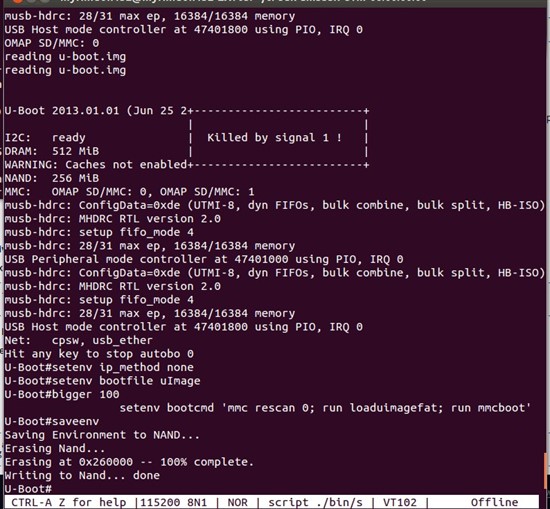Hi all,
I'm a student trying to set up the AM335x EVM for linux development. I ran the create-sdcard.sh script to use pre-build images and after that i ran the setup.sh script.
I'm trying to boot from SD, all goes well until the final step: when U-boot is writing to NAND it says:
writing to NAND..... done
but then it says "killed by signal 1" , "hanging up".
I ignored this at first and tried to boot from SD but when the kernel boots it just randomly stops after some time, sometimes it goes pretty far in the process of booting the kernel, and sometimes it stops after 1 second. I don't know but could this be because of the "killed by signal 1" when i ran the setup script?
I don't know if these problems are related but when i tried accessing the u-boot prompt when it says " hit any key to stop autoboot" i can stop the autoboot and i see the prompt "#U-boot" but i can't enter anything from the keyboard.
I can't seem to find anything related to my problem on the forum, please correct me if i'm wrong.
any help would be greatly appreciated.


